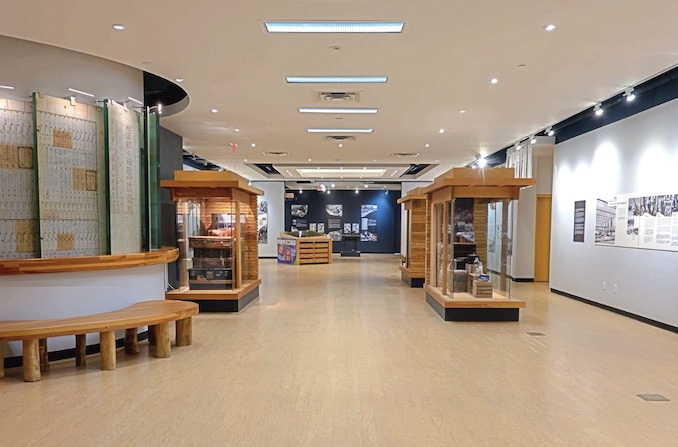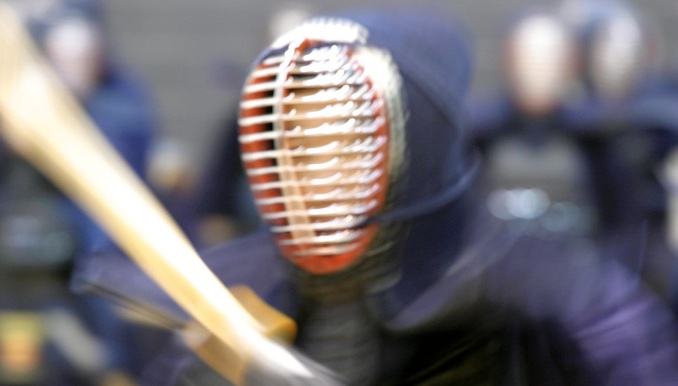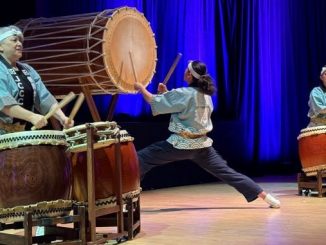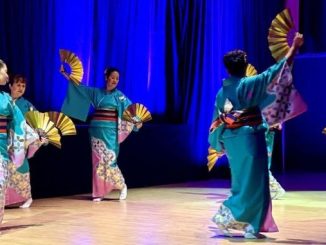The Japanese Canadian Cultural Centre in Toronto, Canada has been a central hub for Japanese culture and community for the past 60 years. Founded by 75 families who mortgaged their own homes to purchase property and construct the centre, it has since evolved into a model cultural centre that promotes understanding, inclusion, and friendship through the celebration of Japanese culture and Japanese Canadian heritage. As the centre celebrates its kanreki anniversary, it continues to respect, preserve, and share the history of the Japanese Canadian community while connecting with the Japanese diaspora globally. The centre’s Discover Japan Educational Program also introduces Canadian school children to hands-on experiences of Japanese culture, history, and the internment of Japanese Canadians during World War 2. We spoke with Chris Hope, Board Chair and President of the JCCC, to find out more about them.

Can you tell us more about the sacrifices and perseverance of the 75 families who founded the Japanese Canadian Cultural Centre?
In the late 1950s, Toronto was a conservative, administrative city. In the early 1960s, the frequently racist phrase “Made in Japan” referred to cheap, breakable, and disposable products. There was exactly one Japanese restaurant in Toronto. The Japanese Canadian community was less than 20 years from the internment, where all of their material wealth had been stripped from them by the Canadian government. In the early 1960s, a Toronto bylaw still technically prevented anyone of Japanese descent from entering Forest Hill. Businesses continued to discriminate against the hiring of Asians, and Japanese Canadians in particular.
And yet, Japanese Canadian community leaders began to plan the opening of a gathering place for the purpose of welcoming all of the outside world to come in, and to eat and drink with members of the Japanese Canadian community as proof that they weren’t the menace that they were widely made out to be. Calling the gathering place a Japanese Canadian “community” centre was ruled out early in the process. The founders were so sensitive to the language of exclusion, they didn’t want the centre’s name to be exclusionary of others outside the Japanese Canadian community.
They settled on the name the Japanese Canadian Cultural Centre, to connote a space that would welcome all to join in the celebration of Japanese Canadian culture under the deceptively simple motto friendship through culture.
The community leaders needed to purchase property to construct the centre, but with their meager post-internment financial standing, they couldn’t meet the commercial requirements of any financial institution to qualify for a land purchase and construction loan.
In 1961, 75 families mortgaged their own homes, literally putting everything they had on the line, to proceed with the construction of the original Japanese Canadian Cultural Centre. On a sunny afternoon in June 1964, Prime Minister Lester B. Pearson stood at the podium at the entrance of the new building and officially opened the Japanese Canadian Cultural Centre in front of a few hundred – mostly Japanese Canadian spectators.
Pearson’s speech suggests that the JCCC may have been one of the launching pads – if not THE launching pad – of a Canadian experiment called multiculturalism – even before there was such a thing as Canadian multiculturalism.
In his address, Pearson stated:
“For me, this centre is a reminder of the multi-racial heritage on which our nation is being built, surely and strongly. It is a new living monument to the fact that our Canadian purpose, which seeks a Canadian identity, need not and does not mean a loss of the traditions and cultures, the arts and skills brought to Canada from other lands.”
“…action taken by the Canadian government, although taken under the strains, fears, and pressures of war – was a black mark against Canada’s traditional fairness and devotion to the principles of human rights.”
“I hope that the Centre will serve as a reminder to future generations of Japanese Canadians that theirs is an abundant heritage and a proud tradition.”
All of this from a Prime Minister – directly to an audience that had been incarcerated by the government 20 years earlier on account of their race. A fact that had never previously been acknowledged by the government.
How has the Japanese Canadian Cultural Centre helped to promote cultural diversity in Canada over the past 60 years?
The JCCC has served as a gathering place for those with an interest in Japanese culture, from martial arts to ikebana and traditional dancing, and Japanese Canadian history. With its motto of friendship through culture, the common denominator for involvement at the centre is a shared interest in the programming or other offerings, in an environment where everyone is treated equally and with respect.

The centre has also helped to boost the careers and profiles of Japanese Canadians who have proudly stood out against the perception that Japanese Canadians and those from the Japanese diaspora should quietly abide by the norms of the majority, from its early support of pioneering Japanese Canadian architect Raymond Moriyama and his cutting-edge design of the original JCCC building, to serving as an early forum for keynote discussions about race and human rights by a young Dr. David Suzuki in the early 1970s.
That spirit lives on through the awarding of the JCCC’s highest honour, the Sakura Award which, since its inception in 2009, recognizes exceptional contributions made by individuals to the promotion and exchange of Japanese culture and enhancing awareness of Japanese heritage within Canada and abroad. Recipients have included Raymond Moriyama, David Suzuki, Seiji Ozawa, Joy Kogawa, and George Takei, to name a few.
What significance does the kanreki anniversary hold in Japanese culture, and how is the JCCC marking this milestone?
In Japanese culture, Kanreki connotes the celebration of rebirth on the occasion of a sixtieth anniversary.
On the eve of the 60th anniversary, the JCCC opened a new exhibit entitled “60 Years of Friendship Through Culture” that traces the history of different key elements of life at the JCCC – major events, clubs, programming, and awards. The exhibit clearly documents the key role the JCCC has played as a central hub for generations for both the Japanese Canadian community and the broader community in the Toronto area.
The centre was also proud on its 60th anniversary to launch in its gallery an ambitious show by world-renowned Japanese Canadian photographic artist Shin Sugino entitled Déjà Vu: Split Perception as One. The launch attracted significant national press coverage in Canada and is also available globally through Google Arts and Culture:
https://artsandculture.google.com/story/HwVRhZoDEP8dzQ
How has the JCCC evolved over the past 60 years, and what role does it play in the Japanese Canadian community today?
The JCCC continues to respect, preserve, and share the history of the Japanese Canadian community and the unique evolution of historic Japanese culture that continues to live on among Japanese Canadian families with roots in the time that their ancestors emigrated from Japan – in some cases over 100 years ago. That includes remembering and sharing the history of the internment of the Japanese Canadian population in Canada during World War 2, when all people of Japanese descent were forcibly removed from their homes and their property was seized by the government – a very unfortunate chapter in Canadian history.
Breaking down the barriers of discrimination through the building of friendship through culture at a local level was a key priority for the founders of the centre, and the success of the concept has seen the centre flourish over the course of its 60-year history.
The centre is now poised to succeed for another 60 years with its wider and even more ambitious vision. The JCCC is now connecting with the Japanese diaspora globally and connecting with it in new, meaningful, and interesting ways.
The centre continues with its motto of “friendship through culture,” and with its new vision, we hope to show the world what a model cultural centre that brings large groups of people together in friendship looks like.
What is the significance of the Déjà Vu: Split Perception as One exhibition by Shin Sugino, and how does it relate to the JCCC’s mission and values?
The JCCC vision is: To enrich lives globally through the celebration of Japanese Culture and Japanese Canadian heritage. The JCCC mission is: To promote understanding, inclusion, and friendship by sharing the Japanese Canadian experience and traditional and contemporary Japanese Culture.
Shin Sugino is a world-renowned Japanese Canadian photographic artist that the JCCC is honoured to host.
About Shin Sugino
Shin Sugino is a renowned photographer with an extensive body of work in both commercial and art photography. Born in Japan and raised by French nuns, Sugino originally studied to become a priest but became disillusioned with this life and immigrated to Canada at the age of 19 to become a photographer. Graduating from Ryerson in 1973, he soon won a Canada Council grant and received assignments sending him around the world for Time, Newsweek, the LA Times, and the National Film Board. Notable work from this time period includes his 1975 exhibition at the NFB gallery, Pilgrimage, and his exhibition sponsored by Polaroid, Moroccan Portraits, which featured a variety of subjects in Morocco holding Polaroid portraits of themselves. Sugino later became involved in shooting still photography for feature films, as well as advertising photography, where he developed the first fully digital studios in Canada. In recent years, Sugino has also begun producing tintype art photographs.
Sugino has identified recurring themes in his art of ‘religious zeal, sensuous forms, concealed identity, cultural dislocation and suffering and redemption through art.’ Of his role as a photographer, Sugino has said, ‘The ‘selfie’ revolution notwithstanding, a photographer is by definition an outsider. As an art photographer, my role, my pleasure, is to capture a subject, a scene, of which I am not a part. […] The irony of photographer as an outsider, of course, is that the resulting image transforms me to insider — the viewer can see what I chose to capture and imagine what I did not. I’ve become intertwined with the subject. My art may not be a remedy, after all, but it has brought me closer to belonging than I ever thought imaginable.'”
How does the Discover Japan Educational Program at the JCCC benefit Canadian school children, and what kind of impact has it had on the community?
The program helps the JCCC to introduce students to a hands-on experience regarding Japanese culture, Japanese Canadian history, and the Japanese Canadian internment. We hope to ignite an interest in cultural awareness that will last a lifetime.
***

The Japanese Canadian Cultural Centre is also running their 12th annual film festivalat Kobayashi Hall from June 8th – 22nd, showcasing contemporary Japanese cinema. The festival aims to offer a unique perspective on Japan that goes beyond its traditional culture and showcases the country’s immense creativity.
This year’s festival will feature a diverse lineup of films, including adventure, comedy, and artistic works.
The festival has grown into one of the largest film events of its kind and is recognized as a vital conduit for bringing Japanese film to international audiences. The festival will open with the international premiere of Izuru Narushima’s latest film, “Father of the Milky Way Railroad,” and close with the North American premiere of Tetsu Maeda’s screwball samurai comedy, “We’re Broke, My Lord!” The festival will also include visiting filmmakers, musical performances, art exhibitions, and Japanese food. For more information and ticket details, visit the Toronto Japanese Film Festival website.
Find out more about the festival HERE.



